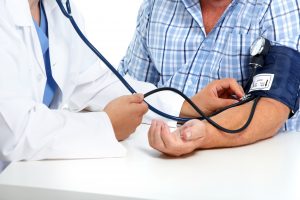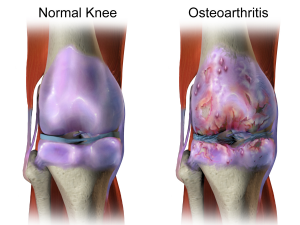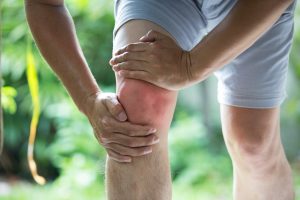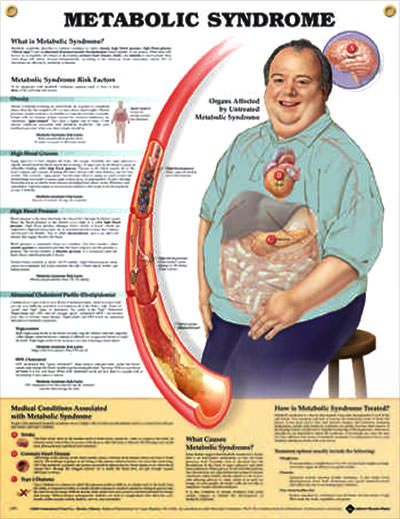 Blood pressure is determined by (1) the amount of blood the heart pumps and the amount of resistance to blood flow in the arteries. Consequently, the more blood the heart pumps, and the tighter the arteries, the higher the blood pressure.[1]
Blood pressure is determined by (1) the amount of blood the heart pumps and the amount of resistance to blood flow in the arteries. Consequently, the more blood the heart pumps, and the tighter the arteries, the higher the blood pressure.[1]
Chronic high blood pressure, or hypertension, can damage arterial walls and can eventually lead to an increased risk from heart disease, heart failure, other arterial diseases, kidney disease, irregular heart rhythms, osteoporosis, cognitive dysfunction, painful intercourse and stroke.[2] High blood pressure, also known as hypertension, is rampant in western societies. Untreated high blood pressure is a major killer. It is especially dangerous because it is primary risk factor for heart disease and stroke.
I have written several blogs on high blood pressure. Nevertheless, the experience of my friend Wayne may provide impetus for hypertension sufferers to try the sunshine solution.
Wayne, a resident of Texas, came to our former health resort seeking help for conditions of high blood pressure, obesity and various other maladies. I recommended, along with our healthful nutrition program, that he should sunbathe daily. Consequently, he “took it to heart” and could be found outside by the pool daily, dutifully soaking up the midday sunlight.
Wayne arrived at our program with a blood pressure of 157 systolic and 97 diastolic (157/97). Most noteworthy, those numbers put him at high risk for a stroke. Normal blood pressures are considered below 120 systolic, and below 80 diastolic. Four weeks later, as a result of his lifestyle changes. His numbers dropped to 125/54, meaning that he progressed from high stroke risk to very low stroke risk. Especially relevant is the fact that these changes were accomplished without medication.
The average drop in blood pressure among all guests at that program was 16 systolic and 12 diastolic. This is remarkable, considering that many of them had normal levels coming in.
Here are just a few of the blood pressure changes accomplished during that time:
- Frieda, from Oregon, lowered her blood pressure 33 points systolic and 30 points diastolic.
- Joyce, from Rhode Island, lowered her blood pressure 31 points systolic and 24 points diastolic.
- Jeff, from Utah, lowered his blood pressure 39 points systolic and 12 points diastolic.
- Susan, from New York, lowered her blood pressure 20 points systolic and 26 points diastolic.
Was all of this success due to sun exposure?
It should not be construed that these results were all a result of sun exposure. Nor should we conclude that hypertension is a result of sun deprivation. Typical American citizens engage daily in “killer” nutrition, subjecting themselves to dietary patterns and chemical additives that never existed in human life until modern times. Therein lie the major causes of hypertension. Hence, part of the improvements in blood pressure were due to the dietary changes we implemented with our guests.
More research regarding sunlight and blood pressure:
Sun exposure can, to an extent, act as an antidote to the poisons we consume. And, it acts much more quickly than dietary changes. Consider this: Dr. Oplander and his colleagues demonstrated that whole-body Ultraviolet A (UVA) irradiation worked what seemed like a miracle.[3] It caused a rapid, significant decrease of 11% in both systolic (upper number) and diastolic (lower number) blood pressure 30 minutes after the exposure. That change lasted up to 60 minutes. The lowered blood pressure lasted up to 60 minutes. Not only did blood pressure decrease, but arterial blood flow increased by 68%.
Nitric oxide, a potent vasodilator (blood-vessel relaxer) that occurs with sun exposure, was the photoproduct that led to these spectacular, important changes. This is important, because UVA is available almost any time the sun shines, winter and summer. Ultraviolet B (UVB) is not available in some areas during winter, due to the sun’s angle. This is especially true in the higher latitudes of the Northern hemisphere, or in the lower latitudes of the Southern hemisphere. UVB stimulates the production of vitamin D. So, it is especially relevant here that vitamin D was not involved in the lowering of blood pressure in Dr. Oplander’s study. Nitric oxide, however, was very involved.
Let’s take a look at one more study of sun exposure and hypertension: research China demonstrates that exposure to sun correlates to a lowered risk:[4] In a randomly selected population of Chinese residents from Macau (where the rate of hypertension is very high), the following risk factors for hypertension were assessed: lack of sun exposure, low intake of fish, smoking, obesity and lack of exercise. An average of more than one-half hour of sun exposure per day, as compared to no sun exposure, predicted a 40% reduced risk for hypertension.
I could go on for another page about the horrors of blood-pressure medication, but what I have said suffices. Non-burning sun exposure is one of the best elixirs for hypertension. In conclusion, one might say that it is no wonder that Wayne overcame his blood pressure problem!
[1] Mayo Clinic Diseases and Conditions: High blood pressure (hypertension). http://www.mayoclinic.org/diseases-conditions/high-blood-pressure/basics/definition/con-20019580 (accessed January 5, 2016).
[2] Ann Pietrangelo. Healthline 2014 http://www.healthline.com/health/high-blood-pressure-hypertension/effect-on-body (accessed January 4, 2016).
[3] Opländer C, Volkmar CM, Paunel-Görgülü A, van Faassen EE, Heiss C, Kelm M, Halmer D, Mürtz M, Pallua N, Suschek CV.. Whole body UVA irradiation lowers systemic blood pressure by release of nitric oxide from intracutaneous photolabile nitric oxide derivates. Circ Res. 2009;105:1031–40.
[4] Ke L, Ho J, Feng J, Mpofu E, Dibley MJ, Feng X, Van F, Leong S, Lau W, Lueng P, Kowk C, Li Y, Mason RS, Brock KE. Modifiable risk factors including sun exposure and fish consumption are associated with risk of hypertension in a large representative population from Macau. J Steroid Biochem Mol Biol 2013 Nov 1 [Epub ahead of print].
Osteoarthritis is also known as wear-and-tear arthritis. Yet, the disease is not common in parts to the world where people work hard with their joints to make a living. Rather, the disease is relatively rare. Thus, we would not consider too much work to be the cause. One would think that all of that work with the joints would lead to more wear and tear, no? Osteoarthritis is characterized by bone and cartilage degeneration in joints. This leads to pain and joint stiffness and can lead to disability. 
Vitamin D research.
Research has shown that those whose blood vitamin D measurements were in the middle and lowest thirds of serum vitamin D levels, had a threefold progression of osteoarthritis of the knee during a one-to-two year period. That is, when compared to those in the highest third. Low blood levels of vitamin D also predicted greater loss of cartilage in the joints.[1]
Other research demonstrates that in patients with arthritis of the knee, those with blood levels of vitamin D lower than 20 ng/ml (very low) have more disability. They also have more pain and more weakness than those with higher levels.[2], [3] Low vitamin D levels also correlate closely to greater knee pain and walking difficulty.[4]
Remember, unless it is stated that 25(OH)D levels are a result of supplementation or dietary sources, those levels are dependent on sun exposure. The research on osteoarthritis, discussed above, therefore, is really research on sun exposure.
Another horrific effect of arthritis.
Arthritic joints carry another devastating side effect. Hip replacement surgery is often prescribed for arthritic conditions: those people who go through total-hip-replacement procedures are 4.7 times as likely to have an ischemic stroke. They are also 4.4 times as likely to have a hemorrhagic stroke in the first two weeks post surgery.[5] Those stroke risks remain elevated for 6-12 weeks. The term “ischemic” means producing a local deficiency of blood supply by obstructing blood flow.
Sun exposure, therefore, has a protective effect against arthritis. Consequently, it has the potential to prevent hip-replacement surgery. In addition, it has the potential to prevent strokes.
Consider an article from the Express,[6] a UK online newspaper. It describes research published in the scientific journal, Annals of the Rheumatic Diseases,[7]stating the following: “Millions of people could protect themselves from crippling arthritis by getting a regular dose of sunshine. Scientists found that women with the highest levels of exposure to the sun – specifically Ultraviolet B (UVB) light – were 21 per cent less likely to develop the disease.”
Safely embrace the sun, help prevent osteoarthritis and safeguard your health.
[1] McAlindonTE, Felson DT, Zhang Y, Hannan MT, Aliabadi P, Weissman B, Rush D, Wilson PW, Jacques P. Relation of dietary intake and serum levels of vitamin D to progression of osteoarthritis of the knee among participants in the Framingham Study. Ann Intern Med 1996;125:353-9.
[2] Baker K, Zhang YQ, Goggins J. Hypovitaminosis D and its association with muscle strength, pain and physical function in knee osteoarthritis (OA): a 30-month longitudinal, observational study; American College of Rheumatology meeting; San Antonio, TX; Oct 16-21, 2004; abstract 17552. Also see http://www.medscape.com/viewarticle/538061
[3] Baker K, Zhang YQ, Goggins J. Hypovitaminosis D and its association with muscle strength, pain and physical function in knee osteoarthritis (OA): a 30-month longitudinal, observational study; American College of Rheumatology meeting; San Antonio, TX; Oct 16-21, 2004; abstract 17552. Also see http://www.medscape.com/viewarticle/538061
[4] Wang, J., Nuite, M., Wheeler, L.M., Badiani, P., Joas, J., Mcadams, E.L., Fletcher, J., Lavalley, M.P., Dawson-Hughes, B., Mcalindon, T.E. 2007. Low Vitamin D levels are associated with greater pain and slow walking speed in patients with knee osteoarthritis (KOA). In: American College of Rheumatology Scientific Meeting, 11/6/07-11/11/07, Boston, MA. 56(9supplement): S124. Accessed May 14, 2010 at http://www.ars.usda.gov/research/publications/publications.htm?SEQ_NO_115=211611
[5] Lalmohamed A, Vestergaard P, Cooper C, de Boer A, Leufkens HG, van StaaTP, de Vries F. Hip replacement surgery and stroke. Stroke 2012;43(12):3225-9.
[6] http://www.express.co.uk/life-style/health/375632/Sun-helps-stop-arthritis. (accessed November 27, 2015).
[7] Arkema EV, Hart JE, Bertrand KA, Laden F, Grodstein F, Rosner BA, Karlson EW, Costenbader KH. Exposure to ultraviolet-B and risk of developing rheumatoid arthritis among women in the Nurses’ Health Study. Ann Rheum Dis. 2013 Apr;72(4):506-11
 In research on rheumatoid arthritis, involving studies done on nurses, an interesting result emerged.[1] It was found that among nurses 30-55 years of age who were assessed in 1976, and followed until 2008, there was an inverse association between sun exposure and the risk of rheumatoid arthritis. Those who were exposed to the greatest sun exposure had a 21% reduced risk of the disease. However, among nurses 25-42 years of age who were assessed in 1989 and followed until 2008, rheumatoid arthritis was not associated with greater sun exposure.
In research on rheumatoid arthritis, involving studies done on nurses, an interesting result emerged.[1] It was found that among nurses 30-55 years of age who were assessed in 1976, and followed until 2008, there was an inverse association between sun exposure and the risk of rheumatoid arthritis. Those who were exposed to the greatest sun exposure had a 21% reduced risk of the disease. However, among nurses 25-42 years of age who were assessed in 1989 and followed until 2008, rheumatoid arthritis was not associated with greater sun exposure.
The authors of the researchers offered an explanation regarding the disparate results. They felt that the greater use of sunscreen among the younger subjects
may have made the difference.
I agree with that idea. Sunscreen would have decreased the availability of vitamin D production, which may have lead to the lack of a protective effect on rheumatoid arthritis among the younger nurses.
Rheumatoid arthritis is a disease which causes chronic inflammation of the joints, the tissue around the joints and even in certain organs in the body.[2] It is an autoimmune disease such as lupus, multiple sclerosis and seasonal vitamin D declines may trigger it.[3] Vitamin D is an anti-inflammatory hormone and declines in vitamin D levels, of course, are a result of decreasing sun exposure in colder seasons.
Arthritic joints carry another devastating side effect. Hip replacement surgery is often prescribed for arthritic conditions, and those people who go through total-hip-replacement procedures are 4.7 times as likely to have an ischemic stroke, and 4.4 times as likely to have a hemorrhagic stroke in the first two weeks post surgery.[4] Those stroke risks remain elevated for 6-12 weeks. The term “ischemic” means producing a local deficiency of blood supply by obstructing blood flow.
I would be remiss if I did not also mention the transcendent importance of anti-inflammatory nutrition program. Sunlight is important but what you eat is critical. I would suggest that you google “anti-inflammatory diet.” Learn which foods (primarily fruits and vegetables) will help to decrease or prevent the inflammation that leads to RA. In the meanwhile, enjoy some safe, non-burning sunbathing.
[1] Arkema EV, Hart JE, Bertrand KA, Laden F, Grodstein F, Rosner BA, Karlson EW, Costenbader KH. Exposure to ultraviolet-B and risk of developing rheumatoid arthritis among women in the Nurses’ Health Study. Ann Rheum Dis. 2013 Apr;72(4):506-11
[2] Medicinenet.com. Definition of rheumatoid arthritis. http://www.medterms.com/script/main/art.asp?articlekey=5354.
[3] Cutolo M, Paolino S, Sulli A, Smith V, Pizzorni C, Seriolo B. Vitamin D, steroid hormones, and autoimmunity. Ann N Y Acad Sci. 2014 May;1317:39-46.
[4] Lalmohamed A, Vestergaard P, Cooper C, de Boer A, Leufkens HG, van Staa TP, de Vries F. Hip replacement surgery and stroke. Stroke 2012;43(12):3225-9.
Sun exposure reduces risk of heart disease. High cholesterol levels are associated with vascular diseases such as heart disease, ischemic stroke and intermittent claudication (an occlusion of the arteries of the legs that leads to pain and disability). The authors of a recent study compared the effects of vitamin D supplementation with sun exposure to determine which was more effective in reducing risk factors.[1] A group of individuals with insufficient serum vitamin D levels was divided into two groups with different experimental protocols: one was treated with sun exposure to the arms and face between 11 AM and 3 PM and the other was treated with 1,000 IU of vitamin D. A third group had “normal” vitamin D levels and served as a control (no treatment group). Total cholesterol levels and its components of cholesterol, HDL and LDL, were also measured to determine the positive (or negative) effects of the two treatment protocols.
The results were enlightening. Both experimental groups had significant increases in vitamin D. However, the results with cholesterol varied. A significant decrease in total cholesterol was noted in the sun exposure group, and HDL and LDL also decreased in the sun-exposure group. However, in the vitamin D-supplement group, a significant increase was noted in in total cholesterol. HDL also increased significantly, and LDL increased non-significantly.
In other words, vitamin D supplementation could actually lead to an increased risk of vascular diseases by raising total cholesterol, whereas sun exposure is protective against those diseases. So the takeaway is that there is no substitute for the sun when it comes to providing some protection against vascular diseases.
There are those people who worry that melanoma risk may be increased by regular sun exposure. However, we have mentioned many time in this blog that melanoma is much more common among those who work indoors than those who work outdoors. It should also be mentioned that vascular diseases kill far more people than skin cancer. Dr. Richard perhaps said it best:
“Sunlight may have beneficial cardiovascular effects, independently of Vitamin D production. Vitamin D could, in these circumstances, act as a marker for sunlight exposure and its postulated beneficial effects. These recent human data show the physiological relevance of photorelaxation. High blood pressure is the leading cause of disability-adjusted life years lost worldwide and as a risk factor underlies 18% of all deaths.” Weller further noted: “The action spectrum of nitrite release shows ultraviolet B is also involved in nitrite reduction to Nitric Oxide, and thus sunlight may be more effective than a pure UVA source.” He concluded: “the prevalence of cardiovascular and cerebrovascular deaths is around 100 times higher than those from skin cancer. Interventions leading to small changes in the incidence of cardiovascular disease are thus of greater benefit to the health of the public even than large changes in skin cancer incidence.”[2]
Safely embrace the sun and your heart, brain and blood vessels will love you for it!
[1] Patwardhan VG, Mughal ZM, Padidela R, Chiplonkar SA, Khadilkar VV, Khadilkar AV. Randomized Control Trial Assessing Impact of Increased Sunlight Exposure versus Vitamin D Supplementation on Lipid Profile in Indian Vitamin D Deficient Men. Indian J Endocrinol Metab. 2017 May-Jun;21(3):393-398.
[2] Weller R. The health benefits of UV radiation exposure through vitamin D production or non-vitamin D
Pathways. Blood pressure and cardiovascular disease. Photochem. Photobiol. Sci. 2016.
By Marc Sorenson, EdD. For sun exposure…
Can sun exposure reduce rheumatoid arthritis (RA)?
RA is a terrible, crippling disease, which causes chronic inflammation of the joints, the tissue around the joints, and certain organs in the body.[1] Like most diseases, it is one to be avoided and prevented when possible, and sun exposure may indeed help. At our former health resort in Southern Utah, we observed that many people were able to reduce the swelling and inflammation of this disease through adherence to a mostly plant-based nutrition program, or so we thought. Sun exposure in our very sunlit climate may have also played a critically-important part. One of our attendees was a former writer and piano player whose fingers had lost their ability to use the keyboards on either the computer or the piano. In less than two weeks she had gained sufficient range of motion in her hands to resume her two important activities. In addition, the swelling of her knuckles was profoundly reduced. And whereas the nutrition we used was doubtlessly responsible for much of her success, sun exposure was likely responsible for the remainder.
One paper demonstrated that at high latitudes, where sun exposure is considerably less available, the rate of RA is much higher than at lower latitudes.[2] RA is also more severe in winter,[3] a time of less sun exposure. In another report from researchers in Ireland (a northern country with little sun exposure due to overcast conditions), it was shown that 70% of patients had low vitamin D levels and that 26% were severely deficient.[4] And in an investigation using data from the nurses health study, those women who were in the highest versus the lowest category of UVB (ultraviolet light exposure from sun or other sources), had a 21% decreased RA risk.[5]
RA is an autoimmune rheumatic disease (ARD), and seasonal vitamin D declines may trigger flares in (ARD).[6] Such declines, of course, are a result of decreasing sun exposure in the colder seasons.
Arthritic joints carry another devastating side effect. Hip replacement surgery is often prescribed for arthritic conditions, and those people who go through total-hip-replacement procedures are 4.7 times as likely to have an ischemic stroke, and 4.4 times as likely to have a hemorrhagic stroke in the first two weeks post surgery.[7] Those stroke risks remain elevated for 6-12 weeks.
Eat correctly and safely soak up the sun. It’s a better option than hip replacement and potential stroke!
[1] Medicinenet.com. Definition of rheumatoid arthritis. http://www.medterms.com/script/main/art.asp?articlekey=5354.
[2]Vieira VM, Hart JE, Webster TF, Weinberg J, Puett R, Laden F, CostenbaderKH, Karlson EW. Association between Residences in U.S. Northern Latitudes and Rheumatoid Arthritis: A Spatial Analysis of the Nurses’ Health Study. Environ Health Perspect. 2010 Mar 25. [Epub ahead of print]
[3]Cutolo M, Otsa K, Uprus M, Paolino S, Seriolo B. Vitamin D in rheumatoid arthritis. Autoimmun Rev 2007;7:59-64
[4]Haroon, M. Report to European Union League Against Rheumatism, June 13, 2008.
[5]Arkema EV, Hart JE, Bertrand KA, Laden F, Grodstein F, Rosner BA, Karlson EW, CostenbaderKH. Exposure to ultraviolet-B and risk of developing rheumatoid arthritis among women in the Nurses’ Health Study. Ann Rheum Dis. 2013 Apr;72(4):506-11
[6]CutoloM1, Paolino S, Sulli A, Smith V, Pizzorni C, Seriolo B. Vitamin D, steroid hormones, and autoimmunity. Ann N Y Acad Sci. 2014 May;1317:39-46.
[7]Lalmohamed A, Vestergaard P, Cooper C, de Boer A, Leufkens HG, van StaaTP, de Vries F. Hip replacement surgery and stroke. Stroke 2012;43(12):3225-9.
By Marc Sorenson, EdD, Sunlight Institute
Does sunlight have an influence on the risk of having a stroke? It does.
Interesting research had as an objective to determine whether long-term or short-term sunlight exposure affected stroke incidence.1 Measurements of sunlight exposures were taken for 15-,10-,5-,2-, and 1-year exposures to sunlight among 16,606 people who were free on any coronary disease. It was found that shorter exposure periods exhibited slightly stronger protective relationships against stroke, but both long- and short-term exposures were effective. Those who were below the median sunlight exposure had an increased risk of stroke of 61%. The researchers said that they did not know the biological pathways for the protective relationship, but I surmise that the answer is sunlight-induced nitric-oxide production, which keeps the blood pressure down and keeps the vessels flexible.
Whatever the mechanism by which sunlight protects us against stroke, let’s celebrate the fact that the protection is available.
1. Kent ST, McClure LA, Judd SE, Howard VJ, Crosson WL, Al-Hamdan MZ, Wadley VG, Peace F, Kabagambe EK. Short-and long-term sunlight radiation and stroke incidence. Ann Neurol. 2013 Jan;73(1):32-7.
.Marc Sorenson, EdD, Sunlight Institute
While perusing the medical and scientific literature for research that would be pertinent for my upcoming book on the value of sunlight exposure, I found a most interesting paper on sunlight exposure and bone strength.[i] The researchers searched the literature on three groups of patients, Alzheimer’s, Parkinson’s and Stroke which correlated to very high fracture rates among patients suffering from those diseases. They then found three randomized, controlled studies that determined the efficacy of sunlight exposure for reducing the risk of hip fractures in patients with these diseases.
In each study, there was a control group that did not receive the exposure and an experimental group that received regular sunlight exposure to a small part of the body daily for a year. The results were impressive: For Alzheimer’s patients, the reduction in hip fractures was 78% compared to the controls who stayed inside; for Parkinson’s patients, 73%; for stroke patients, 83%. Overall, the risk of the hip fracture was reduced by 77% in the sunlight exposed groups. Bone mass also increased in each sunlight-exposed group, so osteoporosis was obviously reversed. Did you even realize that such a thing was possible? You probably knew it only if you have been reading the Sunlight Institute blogs. There is an even more impressive study that I always mention when writing about sunlight and osteoporosis. For example, an investigation from Spain in 2008 concluded that women who actively participated in sun exposure had one-eleventh the chance of a hip fracture as those who stayed indoors.[ii] It appears from the materials on the different disease groups mentioned above, that reversibility is a reality, but how much more important is it to prevent the disease in the first place? The women in Spain did exactly that.
The National Osteoporosis Foundation estimates that osteoporosis was responsible for more than 2 million fractures in 2005, including 297,000 hip fractures, 547,000 vertebral fractures, 397,000 wrist fractures, 135,000 pelvic fractures and 675,000 fractures at other sites. The foundation also estimates that the number of osteoporotic fractures is expected to rise to more than 3,000,000 by 2025, and that an average 24 % of hip-fracture patients aged 50 and over die within one year following the occurrence of their fracture.[iii] If we take 24% of just the hip fractures that cause death we see that osteoporosis kills at least 71,280 people per year. Larrosa, M. Vitamin D deficiency and related factors in patients with osteoporotic hip fracture. Med Clin (BARC) 2008;130:6-9.
Do you believe that it might be worth a daily sunbath to save the lives of 70,000 people per year? Do you believe that it would be worth daily exposure (unprotected by sunscreen) to the sun (when possible) to reduce your own risk of fracture? Then why don’t we know about these statistics and the marvelous prophylactic effects of sunlight? That answers are simple: (1) it doesn’t sell any Fosamax or Boniva. (2) It doesn’t sell any noxious, deadly sunscreens. (3) It would be unthinkable for most dermatologists to admit that soaking up a little sun each day might be good for us. It has been said, “And ye shall know the truth and the truth shall make you free.”[iv] Now you have boned up on bone strength and sunlight, and you know the truth.
My fervent hope is that all may be free from the deceptions of those who would ignore the truth in favor of making another dollar.
[i] Iwamoto J, Takeda T, Matsumoto H. Sunlight exposure is important for preventing hip fractures in patients with Alzheimer’s disease, Parkinson’s disease, or stroke. Acta Neurol Scand. 2012 Apr;125(4):279-84
[ii] Larrosa, M. Vitamin D deficiency and related factors in patients with osteoporotic hip fracture. Med Clin (BARC) 2008;130:6-9.
[iii] National Osteoporosis Foundation, Fast Facts on Osteoporosis. Accessed Nov. 20, 2009 at http://www.nof.org/osteoporosis/diseasefacts.htm
[iv] John 8:32 (KJV)


